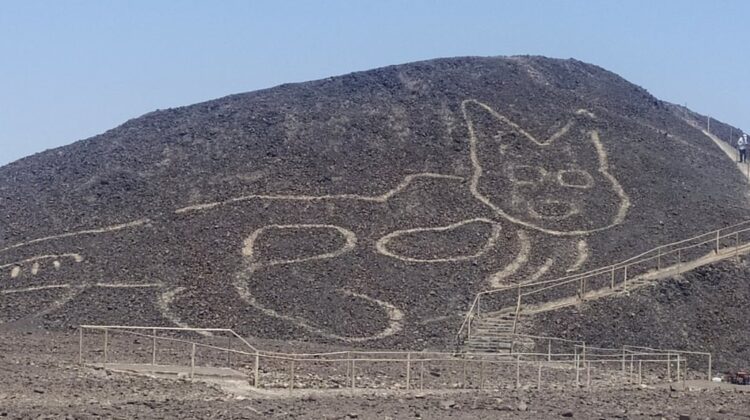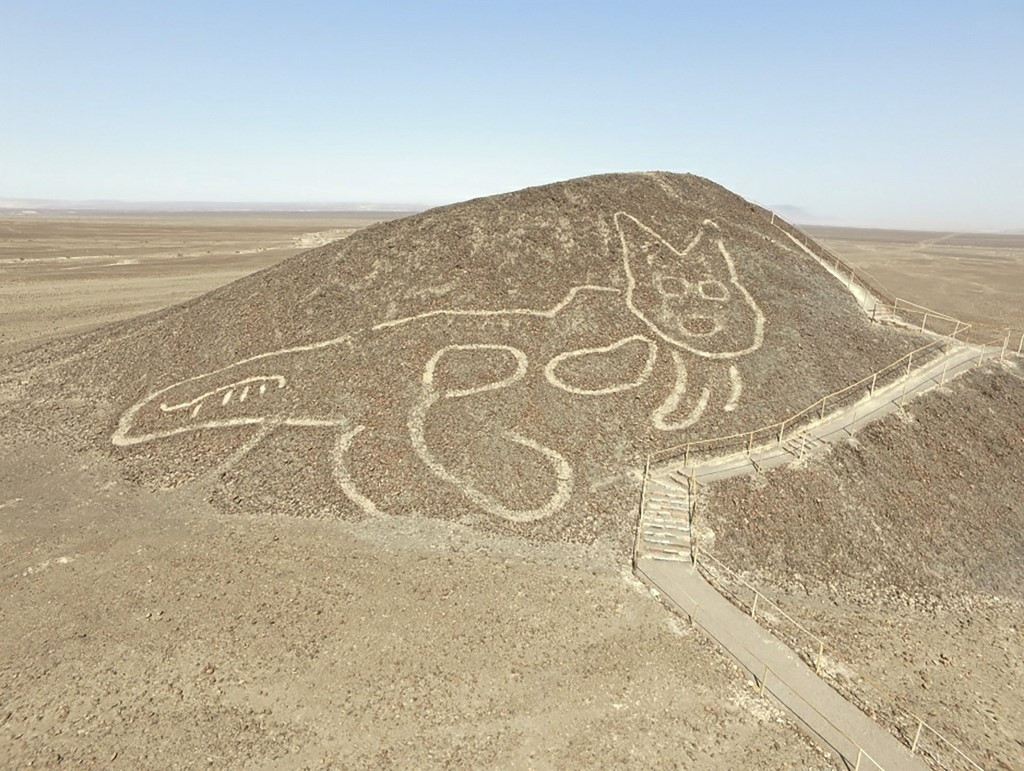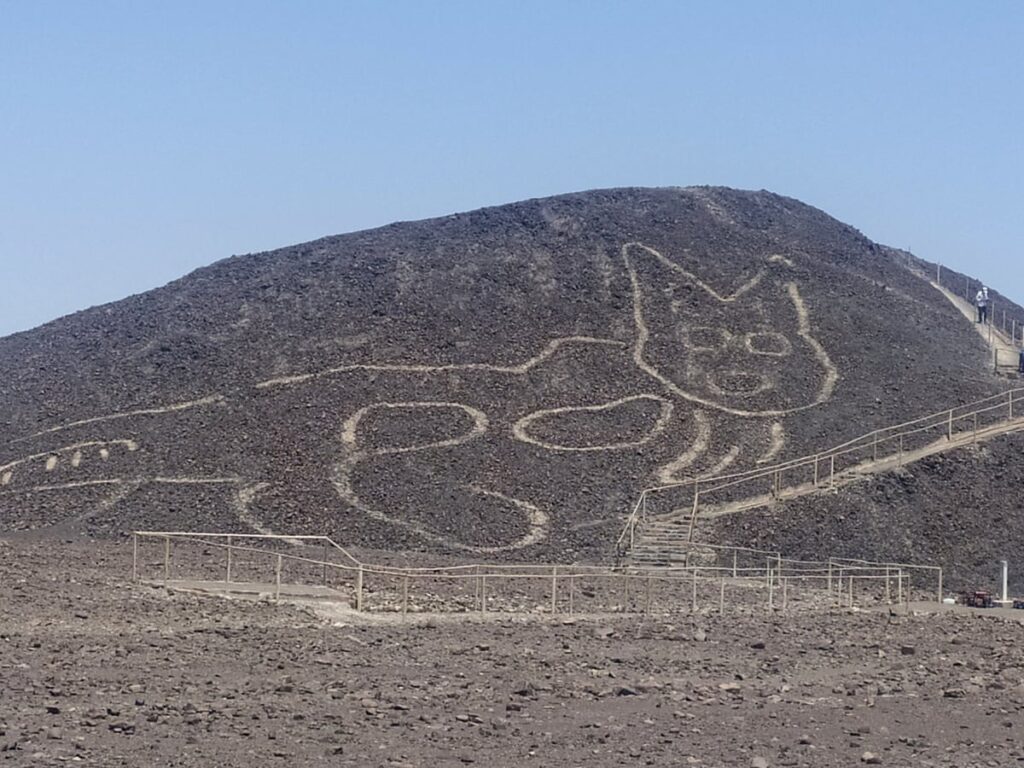
In a groundbreaking discovery, archaeologists have uncovered a massive geoglyph of a cat etched into the hillside of Peru’s Nazca Lines, dating back to 200 BCE. This awe-inspiring revelation not only sheds light on ancient Peruvian art but also reaffirms the cultural significance of the Nazca Lines—an UNESCO World Heritage Site.
A New Ancient Wonder: The Giant Cat Geoglyph
Stretching 36.5 meters, the newly discovered cat geoglyph was found on a steep hillside, a location prone to natural erosion. This massive feline figure was previously almost invisible, obscured by the ravages of time and nature. Thanks to conservation efforts, it has now been cleaned and preserved, revealing a distinct feline figure in profile with its head facing forward. This remarkable piece of ancient artistry was crafted between 200 and 100 BCE, during the late Paracas era, predating the Nazca culture.

What Are the Nazca Lines?
The Nazca Lines are a series of enormous geoglyphs etched into the Peruvian desert, located about 250 miles south of Lima. These ancient artworks are created by removing rocks and soil to create “negative” images visible only from the sky. The Nazca Lines feature an array of geometric shapes, animal figures, and even humanoid forms. Other notable figures include an orca, a monkey, a hummingbird, and a famous figure that some believe represents an astronaut.
These geoglyphs, some of which date back over 2,000 years, continue to spark intrigue and speculation about their creators and their purpose. The Nazca Lines remain one of the most mysterious and iconic archaeological sites in the world.
Why Is This Discovery So Important?
This recent discovery of the giant cat geoglyph is significant for several reasons. First, it challenges the timeline of the Nazca Lines, suggesting that these ancient artworks were created earlier than previously thought. The cat figure is believed to be older than other geoglyphs discovered in the region, offering a deeper understanding of the artistic and cultural practices of the time.

The discovery also underscores the importance of preserving these ancient sites. With modern technologies like drones, archaeologists are now able to uncover hidden figures and monitor the effects of natural erosion on these ancient landmarks. Johny Isla, Peru’s chief archaeologist for the Nazca Lines, commented, “It’s quite striking that we’re still finding new figures, but we also know that there are more to be found.”
The Role of Conservation and Technology
The cleaning and conservation of the cat geoglyph was crucial to its preservation. The steep hillside where the figure was found posed significant challenges, as the figure was at risk of being lost forever due to natural erosion. However, thanks to modern techniques and dedicated archaeologists, the geoglyph has been saved, allowing future generations to experience this ancient masterpiece.

The use of drones has revolutionized the study of the Nazca Lines, enabling archaeologists to capture detailed images of the desert landscape and uncover new figures that would have been impossible to identify from the ground. This advancement in technology has opened up new possibilities for archaeological research and conservation efforts, ensuring that these ancient geoglyphs will be protected for future generations.
The discovery of the giant cat geoglyph at the Nazca Lines not only adds to the allure of this UNESCO World Heritage Site but also enhances our understanding of ancient Peruvian culture and art. As archaeologists continue to explore this ancient site, more secrets are bound to be uncovered, shedding light on the enigmatic past of the Nazca civilization.

Leave a Reply